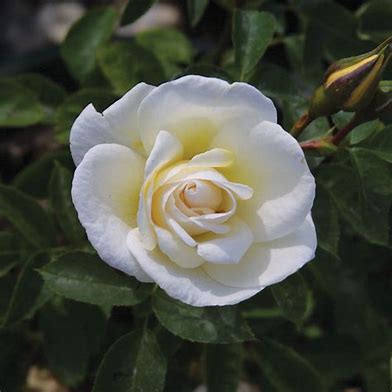Riverdene Garden Center
JP Connell Rose
JP Connell Rose
Couldn't load pickup availability
Rosa ‘JP Connell’
The JP Connell Rose is a cold-hardy, disease-resistant shrub rose known for its buttery yellow blooms that fade to creamy white. Part of the Canadian Explorer series, it was bred for harsh prairie climates (Zone 3-7) and is one of the best yellow-flowering roses for cold regions. This low-maintenance, continuously blooming rose is perfect for borders, hedges, foundation plantings, and mixed flower beds in Southwest Saskatchewan.
Planting & Location
- Hardiness Zone: 3-7 (bred for cold climates, ideal for prairie regions)
- Mature Size: 3-4 feet tall, 2-3 feet wide
- Growth Rate: Moderate (12-18 inches per year)
- Sunlight Needs: Full sun (6+ hours of direct sunlight for best flowering and disease resistance)
-
Soil Preference:
- Prefers well-drained, loamy soil.
- Tolerates clay, sandy, and slightly alkaline soils.
- Avoid overly wet soil, as roses dislike standing water.
- Spacing: 3 feet apart for hedging, 4+ feet apart for individual plantings.
Watering
- Young Plants (First Year): Water deeply 1-2 times per week to establish roots.
- Established Shrubs: Drought-tolerant; water weekly in dry conditions.
- Avoid Overwatering: Prefers moderate soil moisture, but allow the top inch to dry before watering again.
Fertilizing
- First Year: No fertilizer needed—focus on root establishment.
-
Mature Shrubs:
- Apply a balanced slow-release fertilizer (e.g., 10-10-10) in early spring to encourage growth and flowering.
- Feed again after the first flush of blooms to promote continuous flowering.
- Organic alternative: Compost or well-rotted manure in spring.
Pruning & Maintenance
- Best Time to Prune: Late winter to early spring, before new growth starts.
-
How to Prune:
- Remove dead, damaged, or weak branches to improve airflow and reduce disease risk.
- Trim back by one-third in early spring to maintain shape and encourage bushy growth.
- Deadhead spent blooms to encourage repeat flowering.
- Every 3-4 years, rejuvenate by cutting back older stems to ground level.
Flowers, Fragrance & Blooming
- Bloom Time: Late spring to frost (continuous bloomer)
- Flower Color: Soft yellow, fading to creamy white
- Fragrance: Mild, sweet scent
- Flower Type: Fully double, 3-inch blooms
- Attracts: Bees, butterflies, and pollinators
Pest & Disease Management
Highly resistant to: Black spot, rust, and powdery mildew (excellent for humid or dry climates)
Common Pests:
-
Aphids – Can cause curled leaves and sticky honeydew.
- Solution: Spray with insecticidal soap or introduce ladybugs.
-
Japanese Beetles – May eat flowers and leaves.
- Solution: Hand-pick or use neem oil.
Common Diseases:
-
Leaf Spot (Fungal or Bacterial) – Causes brown spots on foliage.
- Solution: Improve airflow and remove infected leaves.
-
Canker (Fungal Disease) – Can cause branch dieback.
- Solution: Prune affected branches 6 inches below infection and sanitize pruning tools.
Winter Protection
- Highly winter-hardy—minimal protection needed in Zone 3-7.
- Mulching: Apply 2-4 inches of mulch around the base (not touching the stems) to insulate roots.
- For extreme cold: Consider mounding soil or mulch around the base of young plants in late fall
Landscape Uses
Perfect for borders, mass plantings, and foundation plantings
Compact and easy to maintain—great for urban gardens
Soft yellow blooms provide a warm color contrast
Cold-hardy and disease-resistant—ideal for prairie climates
Attracts pollinators and blooms all season
Additional Notes:
- JP Connell is one of the best cold-hardy yellow roses, offering continuous blooms, excellent disease resistance, and a manageable size for any garden.
- Lifespan: 20+ years with proper care.
- Works well in cottage gardens, modern landscapes, mixed borders, and as a specimen shrub.
Photo courtesy of Foothills Nursery
Share


